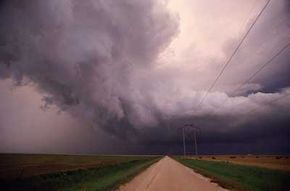What causes thunderstorms? According to the National Oceanic and Atmospheric Administration (NOAA) National Weather Service, approximately 1,800 thunderstorms are occurring at any given time, resulting in about 16-million thunderstorms each year.
Most thunderstorms last about 30 minutes and are typically about 15 miles (24 km) in diameter. The biggest threats associated with most thunderstorms are lightning, strong winds, and flash floods.
Advertisement
Where does the thunder (and lightning) come from? The basic idea is that thunder clouds can become giant Van de Graaff generators and create huge charge separations within the cloud. Let's look at how it works.


